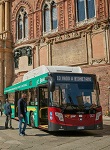A source of clean energy from sewers and wet waste: Biomethane
Focus
Focus
Category Facet
Custom Facet
Search Results
-
Web Content Article on-date Oct 28, 2020 11:44 AM
2020-10-05 (drafted pursuant to article 85-bis, paragraph 4-bis, of Consob Regulation 11971 / 14 May 1999) Bologna, 05 October 2020 - The following table contains the data concerning the shares...
Comunicati stampa: Price sensitive Shareholders’ meeting -
Web Content Article on-date Sep 28, 2020 4:38 PM
2020-09-28 Circula economy The Group, whose strategy is built around innovative and sustainable development guided by a circular economy, is now part of this Alliance. Hera has also been included...
Comunicati stampa: Financial Results Hera Spa Price sensitive -
Web Content Article on-date Dec 10, 2020 11:55 AM
398 Hera in the Alliance for the Circular Economy 2016-10-10 The Hera Group joins the Alliance for the Circular Economy. Established in 2017, the Alliance for Circular Economy currently includes...
-
Web Content Article on-date Sep 24, 2020 10:00 AM
World Road Cycling Championships Bike mobility is the most sustainable type of mobility and the Hera Group fully supports it as main sponsor of the World Road Cycling Championships that are to be...
-
Web Content Article on-date Dec 10, 2020 11:54 AM
398 Valore all'energia 2016-10-10 In good waters, a sustainability report that describes how Hera manages the integrated water cycle and brings benefits to the environment, thanks to the...
-
Web Content Article on-date Sep 19, 2020 3:22 PM
2020-09-17 The two companies have signed the Hera Business Solution protocol for managing integrated waste, drinking water, purification and energy efficiency enhancement services. This...
Comunicati stampa: Financial Results Price sensitive -
Web Content Article on-date Sep 22, 2020 4:43 PM
Firma accordo Fruttagel Circular economy and sustainability are at the heart of the Hera Business Solution protocol, signed today by the Hera Group and Fruttagel, a national leader in the food...
-
Web Content Article on-date Sep 19, 2020 3:19 PM
2020-09-16 The Hera Group continues to rise in Refinitiv’s international ranking, the “Diversity & Inclusion Index”, a reference point for investors who look with interest towards the businesses...
Comunicati stampa: Financial Results Price sensitive -
Web Content Article on-date Jan 21, 2021 12:39 PM
Si Confirm event subscription Bianco Si GRUPPO
-
Web Content Article on-date Sep 16, 2020 2:55 PM
Si Event subscription Bianco Si GRUPPO
-
Web Content Article on-date Sep 16, 2020 11:40 AM
Si Alert subscription Bianco Si GRUPPO
-
Web Content Article on-date Sep 16, 2020 11:40 AM
Si Confirm alert subscription Bianco Si GRUPPO
-
Web Content Article · written-by Palvi Andrea Tonziello on-date Sep 16, 2020 11:31 AM
Si Sign up to receive our Together Newsletter Bianco Si GRUPPO
-
Web Content Article on-date Dec 11, 2020 10:39 AM
1 Refinitiv 2020 This year as well, the “Diversity & Inclusion Index” confirms the Hera Group’s presence among the world’s 25 most interesting companies for investors inclined towards companies...
-
Web Content Article on-date Sep 22, 2020 4:33 PM
Refinitiv_110 This year as well, the “Diversity & Inclusion Index” confirms the Hera Group’s presence among the world’s 25 most interesting companiesfor investors inclined towards companies...
-
Web Content Article on-date Sep 13, 2020 9:16 AM
Hera Group is main sponsor of the next Cycling World Championships The UCI Road World Championships are returning to Italy seven years after the 2013 edition in Florence, Tuscany. The...
-
Web Content Article on-date Sep 10, 2020 3:10 PM
rIqjxLS0TJw Video tutorial no
-
Web Content Article on-date Sep 7, 2020 9:46 AM
2020-09-03 Bologna, 03 September 2020 - The following table contains the data concerning the shares outstanding and the number of voting rights representing the share capital as at 31 August 2020....
Comunicati stampa: Shareholders’ meeting Price sensitive -
Web Content Article on-date Aug 28, 2020 9:01 AM
Investornews Calendario Finanziario
-
Web Content Article on-date Aug 28, 2020 8:56 AM
3_colonne null IR team contacts null Container Director Hansen null Investor Relations Hera S.p.A. Jens Klint Hansen Investor Relations Director Tel: + 39 051 287737 Email:...
-
Web Content Article · written-by Palvi Andrea Tonziello on-date Aug 25, 2020 6:23 PM
Si Analyst highlights Bianco Si GRUPPO
-
Web Content Article on-date Aug 21, 2020 2:57 PM
Si Key indicators Bianco Si GRUPPO
-
Web Content Article on-date Aug 20, 2020 10:25 AM
Si Interactive Data Bianco Si GRUPPO
-
Web Content Article on-date Dec 14, 2020 3:34 PM
Si InvestorNews Bianco Si GRUPPO
-
Web Content Article on-date Aug 20, 2020 9:34 AM
Si Calendar of Corporate Events Bianco Si GRUPPO
-
Web Content Article on-date Aug 19, 2020 4:39 PM
Si Archive Bianco Si GRUPPO
-
Web Content Article · written-by Palvi Andrea Tonziello on-date Sep 28, 2023 4:16 PM
Si DE&I Data 2022 Bianco Si GRUPPO
-
Web Content Article on-date Aug 18, 2020 3:30 PM
Si Hera share interactive tool Bianco Si GRUPPO
-
Web Content Article · written-by Palvi Andrea Tonziello on-date Apr 24, 2023 2:50 PM
SI Code of ethics Having partner suppliers for sustainable growth NO No Sinistra
-
Web Content Article on-date Aug 13, 2020 3:41 PM
SI Code of ethics Having partner suppliers for sustainable growth NO No Sinistra
-
Web Content Article · written-by Palvi Andrea Tonziello on-date Aug 13, 2020 3:18 PM
3_colonne null The purchasing team null Container Marco Del Giaccio null Purchasing and Contracts management Marco Del Giaccio Director General Contacts Phone: +39 051 287111 HERA...
-
Web Content Article on-date Aug 13, 2020 3:16 PM
<strong>199 287 287</strong><br/>MONDAY - FRIDAY<br/>8.00 am - 12.30 pm<br/>1.30 pm - 4.30 pm Contact us Sinistra
-
Web Content Article on-date Aug 13, 2020 3:14 PM
Code of ethics
-
Web Content Article on-date Aug 13, 2020 3:13 PM
Helpdesk
-
Web Content Article on-date Aug 13, 2020 2:55 PM
Are you already a supplier? Before accessing the e-procurement consult the access requirements and the manual.
-
Web Content Article · written-by Palvi Andrea Tonziello on-date Aug 13, 2020 2:54 PM
First read the rules and the access requirements, then go ahead and register.
-
Web Content Article on-date Aug 13, 2020 2:51 PM
ico_diventare_fornitori.png ico_bandi_gare.png ico_procurement.png ico_manuali.png ico_faq.png null null null null null Public tenders The purchase system E-procurement Becoming a...
-
Web Content Article · written-by Palvi Andrea Tonziello on-date Aug 13, 2020 11:23 AM
3_colonne null null null Container Bocchi.png null Direzione valore condiviso e sostenibilità Filippo Maria Bocchi Direttore Contatti generali Hera S.p.A. Direzione Valore Condiviso e...
-
Web Content Article · written-by Palvi Andrea Tonziello on-date Aug 13, 2020 11:12 AM
Alta Quattro Our purpose Mission and Values Code of Ethics Hera's stakeholders Bianco #00a19b #00a19b #00a19b #00a19b
-
Web Content Article on-date Aug 13, 2020 11:06 AM
Si Social Responsability Bianco Si GRUPPO
-
Web Content Article on-date Aug 7, 2020 9:53 AM
Application Screening Placement null null null Website Agreements with school, Universities and Master's programmes Career Day Find out more Send your CV Screening CV Interview Technical...
-
Web Content Article on-date Aug 6, 2020 5:37 PM
Si Focus on innovation Bianco Si GRUPPO
-
Web Content Article on-date Aug 7, 2020 10:52 AM
20 top_employer_2019_870x320.1580396566.png sinistra The Group has been certified for the eleventh consecutive year, rewarding a strategic management that focuses on people and gets them involved...
-
Web Content Article · written-by LUCIA ALGISI on-date Aug 6, 2020 2:36 PM
SI Privacy in Hera’s Group Hera Group cares about privacy and security of the collected data, which is ensured by means of a complex document management system consisting of information security...
-
Web Content Article on-date Aug 6, 2020 2:35 PM
No Privacy Bianco No GRUPPO
-
Web Content Article · written-by Palvi Andrea Tonziello on-date Aug 6, 2020 2:31 PM
SI Accept all cookies Reject all cookies By clicking on “Accept all cookies” you consent to the use of all analytical and profiling cookies. If you wish to customise your choices, continue reading...
-
Web Content Article on-date Aug 6, 2020 2:31 PM
No Cookie policies Bianco No GRUPPO
-
Web Content Article on-date Aug 6, 2020 2:25 PM
SI Information Hera S.p.A. Head Office Address Viale Carlo Berti Pichat nr. 2/4 - 40127 Bologna Phone +39 051 287111 - Fax +39 051 287525 heraspa@pec.gruppohera.it Paid-up Share Capital €...
-
Web Content Article on-date Aug 6, 2020 2:22 PM
SI The figures, graphics and information contained in the present site are protected by copyright. They may not be reproduced on other sites, in publications or other contests without prior written...
-
Web Content Article · written-by Marco Beccati on-date Aug 5, 2020 4:36 PM
SI With the 2023 sustainability report Hera aims at offering our readers a report articulated in different formats, so that each of them can choose the level of detail on the results achieved and...
-
Web Content Article on-date Aug 5, 2020 4:36 PM
Si Sustainability report Bianco Si GRUPPO
-
Web Content Article on-date Jan 15, 2021 12:57 PM
Si SR Previous Edition Bianco Si GRUPPO
-
Web Content Article on-date Aug 5, 2020 4:12 PM
Si Press Review Bianco Si GRUPPO
-
Web Content Article on-date Aug 5, 2020 5:17 PM
Si Awards Bianco Si GRUPPO
-
Web Content Article on-date Aug 5, 2020 3:06 PM
Si Regulations and informative note Bianco Si GRUPPO
-
Web Content Article on-date Aug 5, 2020 3:06 PM
Regulations for the qualification process, online tenders, assessment of suppliers and, in general, the exchange of supply related documents are contained in our “e-Procurement Regulations”....
-
Web Content Article on-date Feb 2, 2021 9:41 AM
Innovation and sustainable future for our cities.
smartcity Categoria Progetto: Innovation -
Web Content Article · written-by LUCIA ALGISI on-date Aug 5, 2020 2:10 PM
SI Why should i choose to work for Hera? We exert our best efforts every day to create a stimulating workplace environment. We believe in people, lifelong learning, sharing and diversity. We want...
-
Web Content Article on-date Jan 5, 2021 5:23 PM
SI Workshop - Back to the future: the new frontiers for people, companies and industrial systems 9 December 2020, Live streaming THE PROGRAMME 2.45 pm Connection of participants to live streaming...
-
Web Content Article on-date Aug 5, 2020 10:08 AM
SI Workshop - Climate change: the global scenario and the strategic plans of ecosystems and companies Bologna, Spazio Hera, viale Carlo Berti Pichat 2/4, 30 October 2018 THE PROGRAMME 2.30 pm...
-
Web Content Article on-date Aug 5, 2020 10:07 AM
Programma Workshop HerAcademy 30 ottobre 2018
-
Web Content Article on-date Aug 5, 2020 10:05 AM
Programma Workshop HerAcademy 5 dicembre 2016
-
Web Content Article on-date Aug 5, 2020 10:04 AM
SI Workshop - Markets & Technology: a new interplay between customer experience and growth A comparison between studies and empirical experiences Bologna, Spazio Hera, viale Carlo Berti Pichat 2/4,...
-
Web Content Article on-date Aug 5, 2020 9:57 AM
Programma Workshop HerAcademy 14 dicembre 2015
-
Web Content Article on-date Jan 28, 2021 10:04 AM
Workshop HerAcademy 2020
-
Web Content Article on-date Aug 5, 2020 9:56 AM
SI Workshop - Waste cycle sustainability and new lifestyles in a changing society The environment sector, the players involved and the regulatory system Bologna, Spazio Hera, viale Carlo Berti...
-
Web Content Article on-date Aug 5, 2020 9:28 AM
Grande Nero Workshop - Waste cycle sustainability and new lifestyles in a changing society The environment sector, the players involved and the regulatory system Bologna, Spazio Hera, viale Carlo...
-
Web Content Article on-date Aug 5, 2020 9:28 AM
Grande Nero Workshop - Climate change: the global scenario and the strategic plans of ecosystems and companies Bologna, Spazio Hera, viale Carlo Berti Pichat 2/4, 30 October 2018 Grande Nero Sotto...
-
Web Content Article on-date Jan 5, 2021 5:34 PM
Grande Nero Workshop - Back to the future: the new frontiers for people, companies and industrial systems 9 December 2020, Live streaming Grande Nero Sotto Find out more Nove dodicesimi Tre...
-
Web Content Article on-date Aug 5, 2020 9:28 AM
Grande Nero Workshop - Markets & Technology: a new interplay between customer experience and growth A comparison between studies and empirical experiences Bologna, Spazio Hera, viale Carlo Berti...
-
Web Content Article on-date Aug 5, 2020 9:22 AM
Si Workshop Bianco Si GRUPPO
-
Web Content Article · written-by Palvi Andrea Tonziello on-date Aug 5, 2020 8:42 AM
SI Thanks to ISO 50001 certification and the intense energy improvement plan, we were able to reduce our consumption by 5.1% compared to 2013 and the further efficiency initiatives we have already...
-
Web Content Article on-date Aug 5, 2020 8:40 AM
Si Hera for a smarter use of energy Bianco Si GRUPPO
-
Web Content Article on-date Dec 10, 2020 11:52 AM
398 Valore all'energia 2016-10-10 Hera accelerates on the road of the energy transition and works to ensure that its suppliers and customers use energy in an increasingly smart, intelligent and...
-
Web Content Article on-date Sep 3, 2020 2:34 PM
2020-08-05 Bologna, 05 August 2020 - The following table contains the data concerning the shares outstanding and the number of voting rights representing the share capital as at 31 July 2020. ...
Comunicati stampa: Shareholders’ meeting Price sensitive -
Web Content Article · written-by Palvi Andrea Tonziello on-date Aug 4, 2020 5:25 PM
An investment of Euro 37 million. A plant that disposes of 100 thousand tonnes of organic waste produced by separate waste collection and another 35 thousand tonnes coming from green waste and...
circulareconomy Categoria Progetto: Heratech Project Innovation -
Web Content Article on-date Aug 4, 2020 5:20 PM
District heating is already in itself a "sustainable" and environment-friendly solution, because it can guarantee better performance than traditional domestic boilers. In addition, the plant...
Categoria Progetto: Heratech Project Energy Efficiency -
Web Content Article on-date Aug 4, 2020 5:14 PM
More than 130 thousand emergency response reports involving 1,500 employees in 2019. More than 50 thousand emergency response operations in the first six months of 2020, in a local area that...
utility4.0 Categoria Progetto: Innovation -
Web Content Article on-date Aug 4, 2020 5:12 PM
Since 2017, we have been developing a measuring system, conceived by Hera Luce, which analyses the materials used in public lighting. What's the target? Making their life cycle circular, as well.
Categoria Progetto: Energy Efficiency Circular Economy -
Web Content Article on-date Aug 4, 2020 5:08 PM
Producing electricity and heat from non-reusable waste. How? In a waste-to-energy plant: it's a safe and legally compliant plant and an energy resource for the local area.
Categoria Progetto: Energy Efficiency Circular Economy -
Web Content Article on-date Aug 4, 2020 5:04 PM
Waste can become sofas, lamps, games, and musical instruments. But even stage sets, art objects and installations. How? We'll tell you about it in this project.
Categoria Progetto: Circular Economy -
Web Content Article on-date Aug 4, 2020 5:02 PM
Thanks to robotics and artificial intelligence we can make our flows more efficient and develop the full potential of individuals and their intellectual capacities. With our Robotic & Intelligent...
utility4.0 Categoria Progetto: Innovation -
Web Content Article · written-by LUCIA ALGISI on-date Aug 4, 2020 4:49 PM
By 2024, Rimini's beaches will be 100% fit for swimming thanks to the Rimini Optimised Seawater Protection Plan (Piano di Salvaguardia della Balneazione Ottimizzato - PSBO). Discover the most...
psbo Categoria Progetto: Heratech Project Circular Economy Water Project -
Web Content Article on-date Aug 4, 2020 4:39 PM
The Great Engine of the World With a free programme of educational initiatives promoted by Hera in Bologna, Modena, Ferrara, Imola, Faenza, Ravenna, Forlì, Cesena and Rimini area schools, students...
-
Web Content Article on-date Aug 4, 2020 4:39 PM
How do we monitor 6,600 plants and over 67,000 km of networks? With our Forlì Remote Control Technological Hub, which monitors operation in real time to detect failures and malfunctions of...
utility4.0 Categoria Progetto: Innovation -
Web Content Article on-date Aug 4, 2020 4:32 PM
Fuel may also be extracted from vegetable oils. Used domestic vegetable oil (such as frying oil) which is recovered by multiutility services via roadside containers and drop-off points, is...
Categoria Progetto: Circular Economy -
Web Content Article on-date Nov 24, 2020 10:22 AM
The NexMeter Green project aims to take a further step towards the future by offering a product that is not only safe and innovative but also sustainable
-
Web Content Article on-date Aug 4, 2020 4:26 PM
We monitor the sewerage networks from high up on the European Space Agency's satellites to prevent any damage and take preventive action. Modena and Bologna lead the pilot project. Find out more.
Categoria Progetto: Water Project Innovation -
Web Content Article on-date Aug 4, 2020 4:21 PM
What's Ferrara's green secret? It's underground, where a geothermal basin feeds its district heating system. The result? 87% of the thermal energy distributed in the city is "clean" and we avoid...
Categoria Progetto: Innovation Energy Efficiency Circular Economy -
Web Content Article on-date Aug 4, 2020 4:19 PM
The ultrasound hydrolysis system, installed in the Forlì treatment plant, makes the life cycle of wastewater sludge circular. The result: less sludge to dispose of, and more biogas produced.
circulareconomy Categoria Progetto: Circular Economy Water Project Innovation -
Web Content Article on-date Aug 4, 2020 4:16 PM
HerAcademy HerAcademy Stretto Making the most of experience and developing skills No heracademy.png No
-
Web Content Article on-date Aug 4, 2020 4:15 PM
Our 300,000 waste bins are talking. How? Thanks to a "tag" that always tells us where they are, how they are working and if they have been emptied. Find out more about the projects of...
utility4.0 Categoria Progetto: Innovation -
Web Content Article on-date Aug 4, 2020 4:07 PM
We have installed a turbo expander at the R&M stations of Ducati's factory in Bologna. The goal is to recover electricity from the decompression process of methane gas.
circulareconomy Categoria Progetto: Innovation Energy Efficiency -
Web Content Article on-date Aug 4, 2020 4:04 PM
Hera Group's drones are alternative and supplemental investigation tools to provide quality services to the areas we serve.
Categoria Progetto: Water Project Innovation -
Web Content Article on-date Aug 4, 2020 4:01 PM
From city to "smart city" thanks to data: with our detection systems we can monitor traffic trends, air quality and consumption of public parks.
utility4.0 Categoria Progetto: Innovation -
Web Content Article on-date Aug 4, 2020 3:46 PM
The Digital Workplace has transformed how we work, making office presence increasingly unnecessary, and fostering remote working and flexibility.
utility4.0 Categoria Progetto: Innovation -
Web Content Article on-date Aug 4, 2020 3:44 PM
Modena's smart purification plant is COSTANCE, the prototype of the purification plant of Granarolo dell'Emilia. Two outstanding examples of sustainable water resource management.
utility4.0 Categoria Progetto: Water Project Innovation -
Web Content Article · written-by Palvi Andrea Tonziello on-date Aug 4, 2020 3:40 PM
With our digital payment solutions, you can pay your bills quickly, easily and securely, directly from your smartphone or home PC.
utility4.0 Categoria Progetto: Innovation -
Web Content Article on-date Aug 4, 2020 3:32 PM
Thanks to Imola's cogeneration plant, which produces electricity and heat from a single source, the city and its district are completely self-sufficient in case of blackouts. Find out more about...
Categoria Progetto: Heratech Project -
Web Content Article on-date Aug 4, 2020 3:28 PM
To obtain clean energy to power Ravenna's buses by decomposing waste in landfills.
circulareconomy Categoria Progetto: Innovation Circular Economy -
Web Content Article on-date Aug 4, 2020 12:58 PM
Si Management Structure Bianco Si GRUPPO
-
Web Content Article on-date Aug 4, 2020 12:49 PM
Si Benchmark by Business Bianco Si GRUPPO
-
Web Content Article on-date Aug 4, 2020 12:48 PM
Si Financial Benchmark Bianco Si GRUPPO
-
Web Content Article on-date Aug 4, 2020 12:47 PM
null null null null null null null null null null null null null null null null null null null null null null null null Remote Control Centre Remote Control Centre Remote Control Centre Remote...
-
Web Content Article on-date Aug 4, 2020 11:09 AM
No Hera Luce Hera Comm Go to site Hera Luce S.r.l. Region Municipality Light points Emila-Romagna 40 202.251 Friuli-Venezia Giulia 62 148.919 Veneto 24 97.654 Lombardia 30 43.514 Abruzzo 7 18.955...
-
Web Content Article · written-by Palvi Andrea Tonziello on-date Aug 3, 2020 12:55 PM
SI As part of the activities offered to schools, the Hera Group has stipulated a three-year protocol with the Regional School Office for Emilia-Romagna with the aim of planning courses for...
-
Web Content Article on-date Aug 3, 2020 12:54 PM
Si Work-study programme Bianco Si GRUPPO
-
Web Content Article on-date Aug 3, 2020 12:47 PM
The project The academic institutions The method The resources The Hera teaches you a vocation... at school project was conceived within the scope of activities for the management and...
-
Web Content Article on-date Aug 3, 2020 12:47 PM
/kNdd6vskuXA 9GDB7EGHcww null null Watch the video Hera teaches you a vocation... at school 2015 Watch the video Hera teaches you a vocation... at school 2013 no
-
Web Content Article on-date Aug 3, 2020 12:37 PM
SI Hera teaches you a vocation... at school is an innovative project for disseminating and developing corporate technical knowledge, within the scope of the HerAcademy training activities, which...
-
Web Content Article on-date Aug 3, 2020 12:36 PM
Si Hera teaches you a vocation... at school Bianco Si GRUPPO
-
Web Content Article · written-by Palvi Andrea Tonziello on-date Aug 3, 2020 12:30 PM
null null null null No Hera teaches you a vocation... at school Work-study programme HeraOrienta The Great Machine Of The World and a well of science null null null https://ragazzi.gruppohera.it/
-
Web Content Article · written-by Palvi Andrea Tonziello on-date Aug 3, 2020 12:28 PM
SI The territory and its community live on knowledge. They are used, transmitted and innovated in the productive fabric, in the places dedicated to study and civil life. The better their quality,...
-
Web Content Article on-date Aug 3, 2020 12:28 PM
Si Primary and upper secondary school Bianco Si GRUPPO
-
Web Content Article on-date Aug 3, 2020 12:14 PM
Grande Nero Work-study programme The HERA Group has signed a three-year protocol with the Emilia-Romagna Regional Education Department to plan work-study programmes and summer internships. Grande...
-
Web Content Article on-date Aug 3, 2020 12:15 PM
Grande Nero A Well of Science Science education events and creative encounters aimed at high schools in the territories where Hera operates, an enjoyable opportunity for students and teachers to...
-
Web Content Article on-date Aug 3, 2020 12:13 PM
Grande Nero School We aim to be key players in our communities in the spreading of awareness about environmental sustainability... Grande Nero Sotto Find out more Nove dodicesimi Tre dodicesimi...
-
Web Content Article on-date Aug 3, 2020 12:13 PM
Grande Nero Hera teaches you a vocation... at school Innovative project meant to improve the management and dissemination of company "knowledge", while favouring the creation of stable...
-
Web Content Article on-date Aug 3, 2020 12:00 PM
Si School Bianco Si GRUPPO
-
Web Content Article on-date Aug 3, 2020 11:56 AM
SI We provide testimonials of case studies and Group research, as well as specialised instruction for a variety of university courses. Some of these include: "Energy savings in lighting" at the...
-
Web Content Article on-date Aug 3, 2020 11:51 AM
Si Testimonials Bianco Si GRUPPO
-
Web Content Article on-date Aug 3, 2020 11:49 AM
SI The possibilities for writing theses within the company combine theory with practice. There are many available topics, such as energy management, smart grid, metering, waste cycle management,...
-
Web Content Article on-date Aug 3, 2020 11:47 AM
Si Dissertations and research Bianco Si GRUPPO
-
Web Content Article on-date Aug 3, 2020 11:44 AM
Si Relationships map Bianco Si GRUPPO
-
Web Content Article on-date Aug 3, 2020 11:46 AM
At present, we actively collaborate with: University of Cagliari Convention for internships aimed at students studying for a Master's Degree in Economic Sciences (all departments). Alma Mater...
-
Web Content Article on-date Aug 3, 2020 11:34 AM
Grande Nero Relationship map The Group has stable relationships with institutions and Universities, and provides educational internships and traineeships in its core business area as well as in...
-
Web Content Article on-date Aug 3, 2020 11:33 AM
Grande Nero Traineeships and internships The Group offers educational internships and traineeships in its core business area as well as in the staff, market and innovation areas. Grande Nero Sotto...
-
Web Content Article on-date Apr 9, 2021 9:02 AM
Grande Nero GrEnFIn Project - Greening Energy Market and Finance Hera Group is one of the 14 Partners of the Erasmus+ KA2 Knowledge Alliances Project <b>“GrEnFIn - Greening Energy Market and...
-
Web Content Article on-date Aug 3, 2020 11:35 AM
Grande Nero Testimonials Testimonials and specialised instruction. Grande Nero Sotto Find out more Nove dodicesimi Tre dodicesimi Testimonials
-
Web Content Article on-date Aug 3, 2020 11:35 AM
Grande Nero Dissertations and research Research activities within the group for graduate dissertations and PHD. Grande Nero Sotto Find out more Nove dodicesimi Tre dodicesimi Dissertations and...
-
Web Content Article on-date Apr 9, 2021 8:50 AM
Si GrEnFIn Project - Greening Energy Market and Finance Bianco Si GRUPPO
-
Web Content Article on-date Aug 3, 2020 11:26 AM
Si University Bianco Si GRUPPO
-
Web Content Article on-date Aug 3, 2020 10:30 AM
null null null null null null null null null null null null Private Property, Public Property and Social Property Private Property, Public Property and Social Property Private Property, Public...
-
Web Content Article on-date Aug 3, 2020 10:27 AM
null null null null null null null null null null null null null null Government and governance of public utility services Government and governance of public utility services Government and...
-
Web Content Article on-date Nov 12, 2021 12:12 PM
null null null null null null null null null null null null null null null null null null null null null null null null null null null null null null null null null null null null null null null...
-
Web Content Article on-date Nov 12, 2021 12:05 PM
null null null null null null null null null null null null Climate change: the global scenario and the strategic plans of ecosystems and companies Climate change: the global scenario and the...
-
Web Content Article on-date Aug 3, 2020 10:24 AM
null null null null null null null null null null null null null null null null null null HeraOrienta HeraOrienta HeraOrienta HeraOrienta HeraOrienta HeraOrienta HeraOrienta HeraOrienta HeraOrienta no
-
Web Content Article on-date Aug 3, 2020 10:24 AM
null null null null null null null null null null null null Waste cycle sustainability and new lifestyles in a changing society Waste cycle sustainability and new lifestyles in a changing society...
-
Web Content Article on-date Aug 3, 2020 10:30 AM
Private Property, Public Property and Social Property Click here to view the best pictures from the Conference “Private Property, Public Property and Social Property: the organisation of knowledge...
-
Web Content Article on-date Aug 3, 2020 10:24 AM
Hera Orienta Every year we operate a University Orientation initiative aimed at the children of Hera Group employees, devoted to helping them choose a university education or career path. This...
-
Web Content Article on-date Aug 3, 2020 10:21 AM
Waste cycle sustainability and new lifestyles in a changing society Click here to view the best pictures from the Conference "Waste cycle sustainability and new lifestyles in a changing society",...
-
Web Content Article on-date Aug 3, 2020 10:27 AM
Government and governance of public utility services Click here to view the best pictures from the Conference "Government and governance of public utility services", held in Bologna on 10 July 2012...
-
Web Content Article on-date Aug 3, 2020 10:20 AM
Si Photogallery Bianco Si GRUPPO
-
Web Content Article on-date Aug 3, 2020 10:12 AM
Grande Nero Associations Participation in associations in the areas of managerial training and education. Grande Nero Sotto Find out more Nove dodicesimi Tre dodicesimi Associations
-
Web Content Article on-date Aug 3, 2020 10:11 AM
Grande Nero Events Dialogue with other businesses through testimonials at events. Grande Nero Sotto Find out more Nove dodicesimi Tre dodicesimi Inter-company events
-
Web Content Article on-date Aug 3, 2020 9:57 AM
Grande Nero Innovation e Change management We have adopted original and innovative models for managing knowledge and organisational learning processes. Grande Nero Sotto Find out more Nove...
-
Web Content Article on-date Aug 3, 2020 10:06 AM
Grande Nero Workshop The Corporate University of Hera Group HerAcademy was opened on 15 December 2011 following a period of research that further confirmed the high qualitative and quantitative...
-
Web Content Article on-date Aug 3, 2020 10:03 AM
Grande Nero Photogallery Grande Nero Sotto Photogallery Nove dodicesimi Tre dodicesimi Photogallery
-
Web Content Article on-date Aug 3, 2020 10:00 AM
Grande Nero Workshop The local area and its community live off knowledge. It is used, transmitted and innovated upon in the productive fabric, in places dedicated to study and civil life. When it...
-
Web Content Article on-date Aug 3, 2020 10:08 AM
Grande Nero Scientific writing Scientific publications prepared for the planning of HerAcademy Workshops. Grande Nero Sotto Find out more Nove dodicesimi Tre dodicesimi Scientific writing
-
Web Content Article on-date Nov 16, 2020 12:33 PM
Grande Nero The HerAcademy Project Heracademy Brochure The brochure introducing the HerAcademy project: the corporate university of the Hera Group. Grande Nero Sotto Heracademy Brochure Nove...
-
Web Content Article on-date Aug 3, 2020 9:59 AM
Grande Nero HeraOrienta This is a University Orientation and World of Work Orientation initiative, dedicated to dialogue and specifically designed for the children of our employees. Grande Nero...
-
Web Content Article on-date Aug 3, 2020 9:57 AM
Grande Nero Training activities Training plays a fundamental role for the Group as a crucial factor for personal and professional growth and development. Grande Nero Sotto Discover Training...
-
Web Content Article on-date Nov 16, 2020 12:30 PM
Grande Nero The Italian context Corporate university corporate training programmes The research project "Corporate University: corporate training programmes" written by Giulio Pedrini under the...
-
Web Content Article on-date Aug 2, 2020 11:24 AM
SI We participate in managerial training and education associations as we believe that continuous dialogue and working within a network are essential components for the development of knowledge and...
-
Web Content Article on-date Aug 2, 2020 11:23 AM
Si Associations Bianco Si GRUPPO
-
Web Content Article on-date Aug 2, 2020 11:17 AM
Si Inter-company experiences Bianco Si GRUPPO
-
Web Content Article on-date Aug 2, 2020 11:18 AM
We work together with other companies to create inter-company programmes involving the exchange of resources to leverage the applicable best practices. For example, in recent years we have worked...
-
Web Content Article on-date Aug 2, 2020 11:11 AM
Si Events Bianco Si GRUPPO
-
Web Content Article on-date Aug 2, 2020 11:12 AM
SI We are committed to engaging in dialogue with other companies and associations at national level by participating in events and presenting case studies. Some of the most recent events include:...
-
Web Content Article on-date Aug 2, 2020 10:30 AM
Si Business Bianco Si GRUPPO
-
Web Content Article on-date Aug 2, 2020 10:12 AM
MIB Trieste School of management Bologna Business School Relationship map http://mib.edu/ http://www.bbs.unibo.it/hp/ null
-
Web Content Article on-date Aug 2, 2020 9:55 AM
We have relationships with various Business Schools with which: we plan and provide guidelines for training initiatives we partner in the creation of internships, traineeships and project work....
-
Web Content Article on-date Aug 2, 2020 9:54 AM
Si Business school Bianco Si GRUPPO
-
Web Content Article on-date Aug 1, 2020 3:52 PM
Governance of economically significant local utilities - state of the art from the legal perspective. no. 1/2012 The social and economic role of companies and sectors in terms of global and local...
-
Web Content Article on-date Aug 1, 2020 3:44 PM
SI For the HerAcademy Workshops, a background paper is prepared which outlines the reference scientific framework of the workshop topic and is used as a point of reference for individual...
-
Web Content Article on-date Aug 1, 2020 3:43 PM
Si Scientific writing Bianco Si GRUPPO
-
Web Content Article on-date Aug 1, 2020 3:26 PM
Si Scientific world Bianco Si GRUPPO
-
Web Content Article on-date Aug 1, 2020 3:07 PM
Si Employees Bianco Si GRUPPO
-
Web Content Article on-date Aug 1, 2020 2:54 PM
null null null null null null null null null null null null null null null null null null HeraOrienta 2018 HeraOrienta 2018 HeraOrienta 2018 HeraOrienta 2018 HeraOrienta 2018 HeraOrienta 2018...
-
Web Content Article on-date Aug 1, 2020 2:44 PM
SI Every year we operate a University Orientation initiative aimed at the children of Hera Group employees, devoted to helping them choose a university education or career path. This University...
-
Web Content Article on-date Aug 1, 2020 2:44 PM
Si HeraOrienta Bianco Si GRUPPO
-
Web Content Article on-date Aug 1, 2020 2:40 PM
Scuola dei Mestieri (Trade School) Communities of Practice Continuous improvement - Lean Organisation The transfer of know-how between employees and the exchange of best practices is fundamental...
-
Web Content Article on-date Aug 1, 2020 2:38 PM
SI Page updated 15 February 2021 NO No Sinistra
-
Web Content Article on-date Aug 1, 2020 2:37 PM
Si Innovation and Change management Bianco Si GRUPPO
-
Web Content Article on-date Aug 1, 2020 2:38 PM
SI Our HR strategy places the individual at the centre, with the aim of making the most of uniqueness and diversity by finding the right balance between tradition and innovation; this is why we...
-
Web Content Article · written-by THOMAS CECCONI on-date Dec 16, 2022 10:29 AM
No Hours of training provided for Training Areas Total training hours per area of intervention HOURS 2020 2021 2022 2023 Technical professional training 76,746 103,709 108,657 120,856 Institutional...
-
Web Content Article · written-by LUCIA ALGISI on-date Aug 1, 2020 2:25 PM
SI Training plays a fundamental role for the Group and is considered to be an indispensable factor for the growth and professional development of people, for the dissemination of company values...
-
Web Content Article · written-by LUCIA ALGISI on-date Aug 1, 2020 2:28 PM
SI Page updated 15 March 2024 NO No Sinistra
-
Web Content Article on-date Aug 1, 2020 2:25 PM
Si Training activities Bianco Si GRUPPO
-
Web Content Article · written-by Palvi Andrea Tonziello on-date Jul 31, 2020 12:31 PM
No HERAtech Laboratories - Via Romea Nord 180/182 48124 Ravenna (RA)
-
Web Content Article on-date Feb 4, 2021 3:41 PM
724 2099-07-28 490 Salvatore Taddeo https://www.youtube.com/watch?v=1npRusFdiaw 758 1 0 Salvatore Taddeo 870
Tipologia Web Channel: Highlights Corporate film -
Web Content Article on-date Jul 30, 2020 3:10 PM
Page updated 4 June 2019
-
Web Content Article on-date Jul 30, 2020 8:47 AM
SI NO No Sinistra
-
Web Content Article on-date Jul 29, 2020 5:19 PM
SI The new line of waste containers Smarty is the new innovative and intelligent bin with user recognition system and waste measurement to improve the quality of separate waste collection....
-
Web Content Article on-date Jul 29, 2020 5:16 PM
Si Smarty Bianco Si GRUPPO
-
Web Content Article on-date Jul 29, 2020 3:30 PM
SI HERA SpA offers interested cities, its services related to the new Smart, Safe, Sustainable city model. As shown, the service can be provided in Steps: The description of each individual step is...
-
Web Content Article on-date Jul 29, 2020 3:27 PM
Si Solutions for City councils Bianco Si GRUPPO
-
Web Content Article on-date Jul 29, 2020 2:29 PM
Nero Bianco Group 7.png shapes.png Smart Waste Full external and internal video surveillance Wi-Fi infrastructure
-
Web Content Article on-date Jul 29, 2020 3:12 PM
Nero Bianco Group 9.png shapes (1).png Sensor Box Bicycle parking spaces for charging ebikes Package deposit
-
Web Content Article on-date Jul 29, 2020 3:12 PM
Nero Bianco Group 10.png shapes (2).png Production of renewable energy from a photovoltaic roof Electrical charging of potable devices Electrical charging of potable devices
-
Web Content Article on-date Jul 29, 2020 1:56 PM
SI The main problems of our cities include: Safety Air quality, particularly concerning the concentrations of PM 10 and NOx and their direct correlation with people’s health; The need...
-
Web Content Article on-date Jul 29, 2020 3:19 PM
SI Smart Waste L’isola tecnologica PUNTOnet potrà essere affiancata da un’innovativa batteria di contenitori per i rifiuti denominata Smart Waste. The PUNTOnet technology station can be equipped...
-
Web Content Article on-date Jul 29, 2020 1:50 PM
null null null null null null null null null null null null null null null null Technological infrastructure - 1 Technological infrastructure - 2 Technological infrastructure - 3 Technological...
-
Web Content Article on-date Jul 29, 2020 1:44 PM
Si Technological infrastructure Bianco Si GRUPPO
-
Web Content Article on-date Jul 29, 2020 12:46 PM
null null null null null null null null null null null null null null dashboard - 1 dashboard - 2 dashboard - 3 dashboard - 4 dashboard - 5 dashboard - 6 Mappa Energetica (1).png no null null null...
-
Web Content Article on-date Jul 29, 2020 12:20 PM
SI The large quantity of data produced by the urban sensors needs to be processed to produce information and therefore knowledge. This entails implementing hardware and software capable of...
-
Web Content Article on-date Jul 29, 2020 12:17 PM
Si PUNTOnet Board Bianco Si GRUPPO
-
Web Content Article on-date Jul 29, 2020 12:10 PM
SI Cities are now facing a new challenge: to adopt a new urban model capable of regenerating them, by combining innovation and sustainability to obtain new growth. Attempts to ensure sustainable...
-
Web Content Article on-date Jul 29, 2020 12:06 PM
Si Old and new cities Bianco Si GRUPPO
Asset Publisher
An investment of Euro 37 million. A plant that disposes of 100 thousand tonnes of organic waste produced by separate waste collection and another 35 thousand tonnes coming from green waste and pruning material.
An investment of Euro 37 million. A plant that disposes of 100 thousand tonnes of organic waste produced by separate waste collection and another 35 thousand tonnes coming from green waste and pruning material. And that, once "digested", produce 7.5 million cubic meters of biomethane fuel that is 100% renewable and 20 thousand tonnes of compost.
These numbers tell the success story of our state-of-the-art plant in Sant'Agata Bolognese, just outside Bologna: the latest great and ambitious project to add to our long list of waste treatment facilities (89 in total, including waste-to-energy plants, composters, and sorting plants). With one big goal: to relaunch the challenge of renewables on an industrial scale and make this plant a reference structure for green energy in Europe.
Biomethane: a clean resource of biological origin
But what makes this natural gas source organic? Simply, the way to get it: not by drilling for hidden deposits in the deepest parts of the Earth but by fermenting organic waste in plants designed to do so. Biomethane can, therefore, be produced for as long as you want, it is endless, and production can be increased simply by building other plants. Making the process one of the purest examples of the circular economy.
In Spilamberto, a biodigester converted into a biomethane plant
An innovative plant for the production of biomethane came into operation in October 2023 in Spilamberto, in the Modena area. It was created by NewCo Biorg, the result of the partnership between the Hera Group and the Inalca company (Cremonini Group), thanks to a total investment of approximately 28 million euros and the use of the best available technologies.
Starting from the separate collection of organic waste and agri-food wastewater, the plant - created from the conversion of an old biodigester - produces 3.7 million cubic meters of biomethane every year when fully operational, a 100% renewable fuel intended for transport, and approximately 18 thousand tons of compost.
A cutting-edge plant for the energy transition and the circular economy
The 100% renewable natural gas is produced in the plant from the anaerobic digestion of organic waste coming from the separate collection carried out mainly in Modena and its district, from the waste resulting from the manufacturing process of the local agri-food industry and from the production process of Inalca's meat. Once refined, it becomes biomethane and can be introduced into the gas network.
The environmental benefits are important: around 7 thousand tonnes of CO₂ are avoided
Thanks to the introduction of biomethane into the network and its use in transport, significant environmental benefits are estimated: every year the use of approximately 3 thousand tonnes of fossil fuel oil equivalent (TOE) will be saved and CO₂ emissions will be avoided for approximately 7 thousand tons. To absorb such a quantity of CO₂, an average of 280 thousand trees would be needed.
What happens in our sant’agata facility
Organic waste, obtained through separate waste collection, is processed by anaerobic digestion to produce biogas. How? The waste, shredded and screened, remains for about 21 days in 4 horizontal digesters, where suitable microorganisms carry out the digestion process to produce biogas (consisting of natural gas and carbon dioxide).
Then the biogas is upgraded using pressurized water to dissolve the carbon dioxide and separate the natural gas. The result is biomethane, a gas with a methane content of over 95% and a completely renewable energy source.
But that's not all. At the end of the digestion process, wood-cellulosic material is added to the resulting solid matter to obtain a compact mass that is sent to composting, to produce quality compost, which can be used as potting soil for vases or as a fertiliser in agriculture.
Come find out more about our Sant'Agata Bolognese plant.
Biomethane is, therefore, another revolution based on the circular economy, which all of us in the Hera Group want to pursue. Again, to create shared value, as Herambiente's CEO, Andrea Ramonda, is determined to emphasize:
“The direction we have taken addresses the industrial world as increasingly oriented towards creating shared value and partnerships. We are aware that sustainable waste management, focused on the recovery of waste and compliant with the rules, is an essential factor in today's world, and one that delivers benefits to the entire community).
The idea of the exhibition came from the photographic project commissioned in 2018 to Silvia Camporesi on the occasion of the work being done on the Sant'Agata Bolognese site. The report has been enriched with other shots, thus becoming the complete story of the development of the plant.
The exhibition consists of 11 large-format photographic works which reveal where and how waste takes another form and becomes biofuel. Technology, innovation, industrial process, efficiency, circularity are the messages underlying each of the images captured by the artist.
Silvia Camporesi visited the plant every month for a whole year, documenting the evolution and changes to the facility.
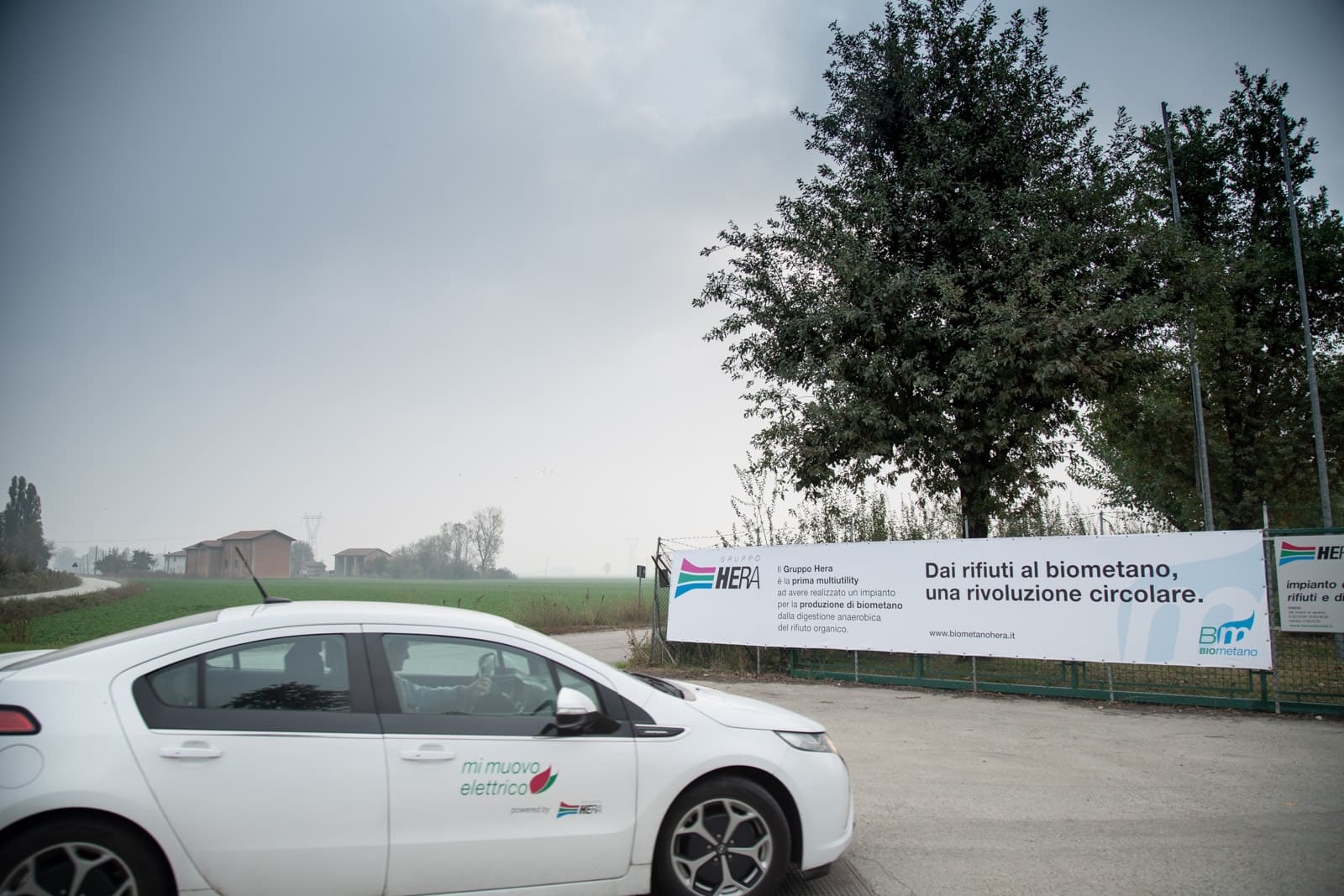
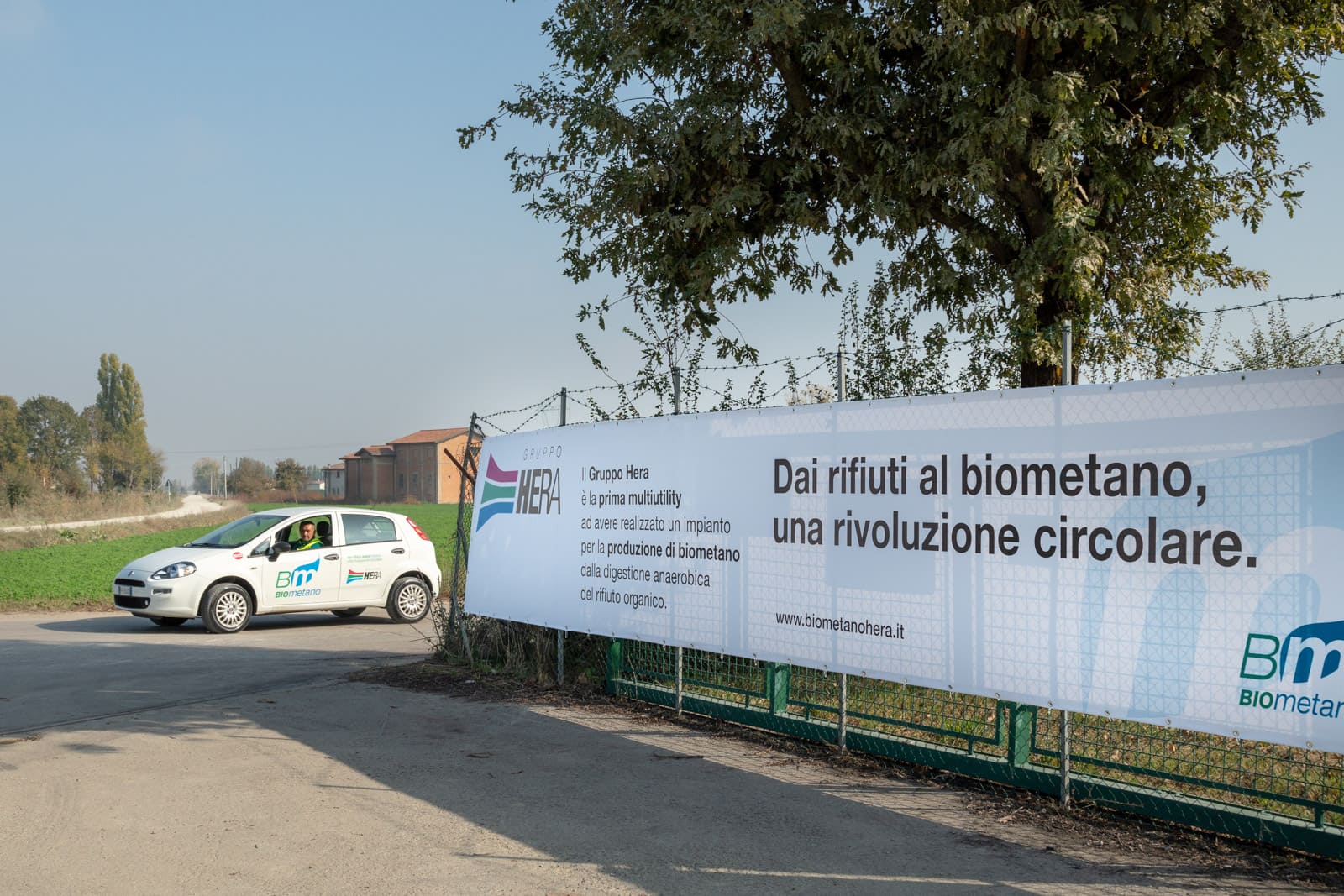

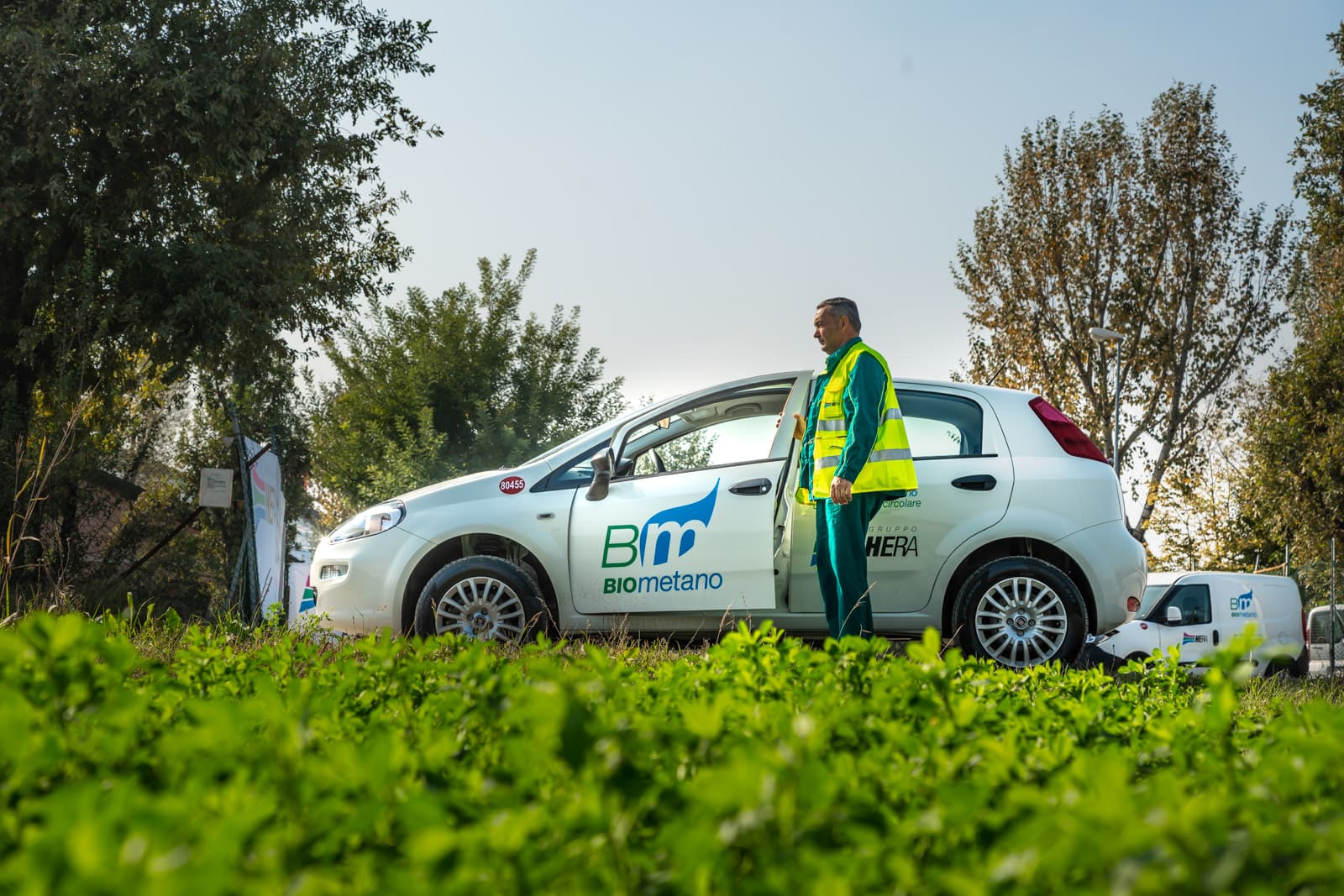
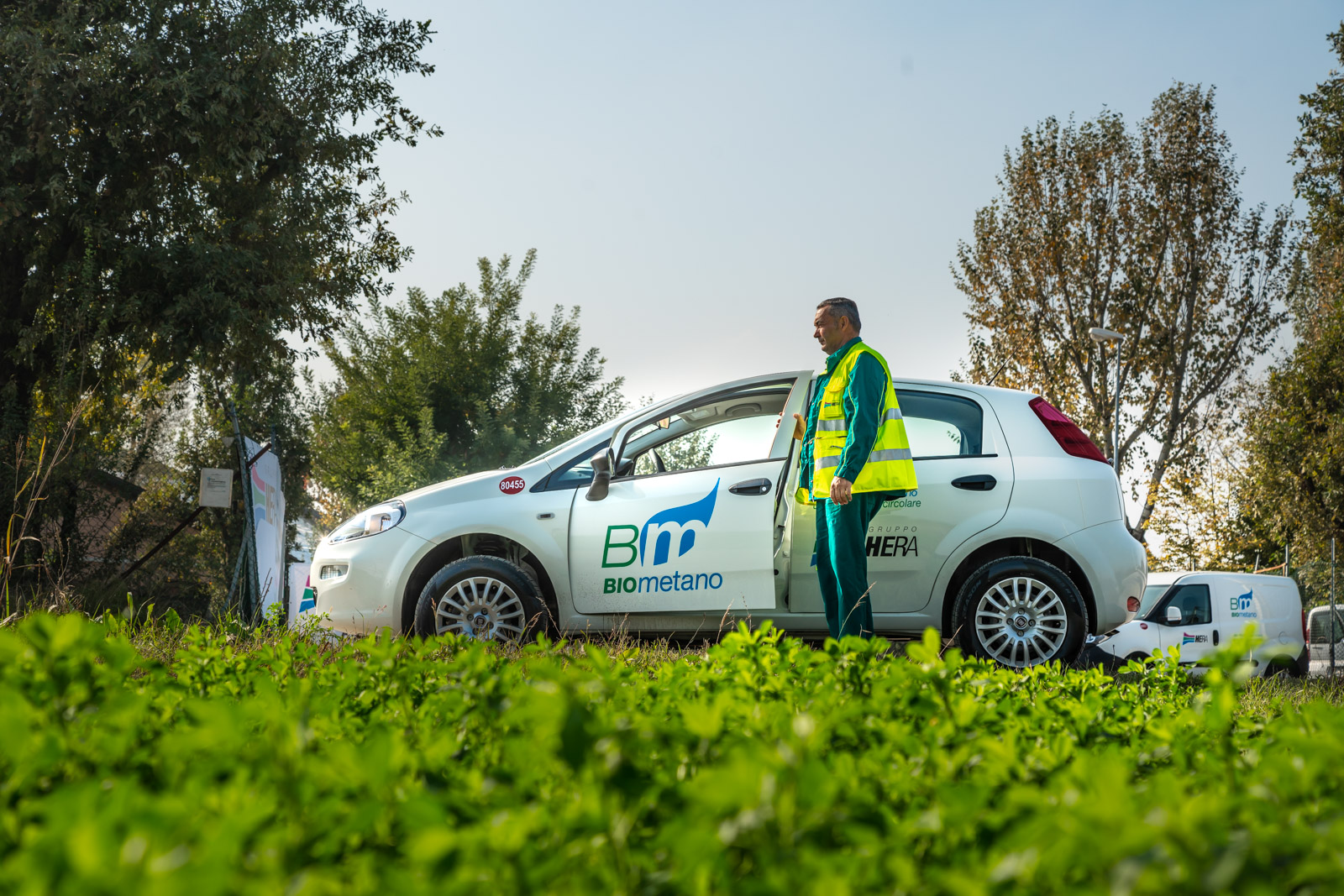


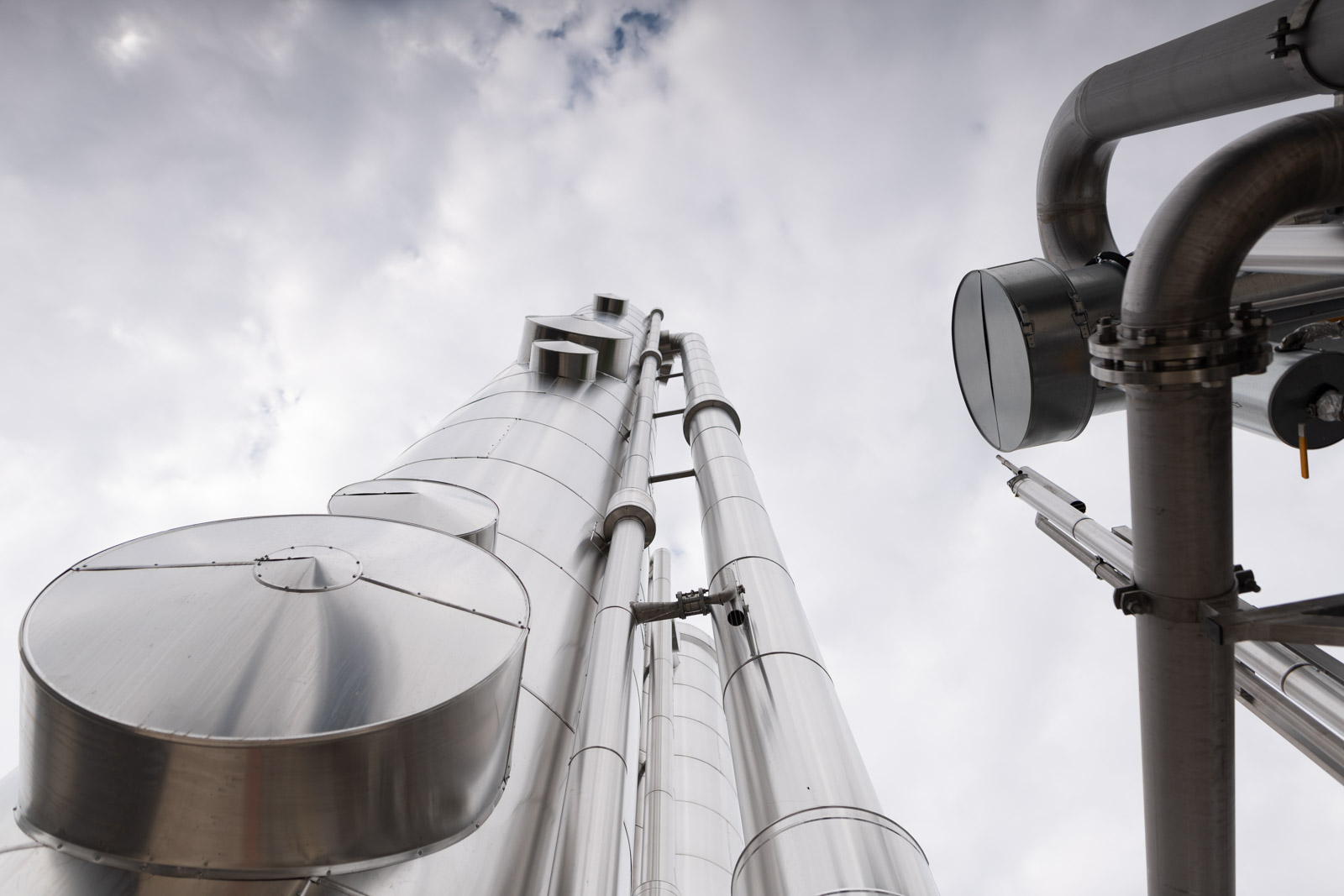
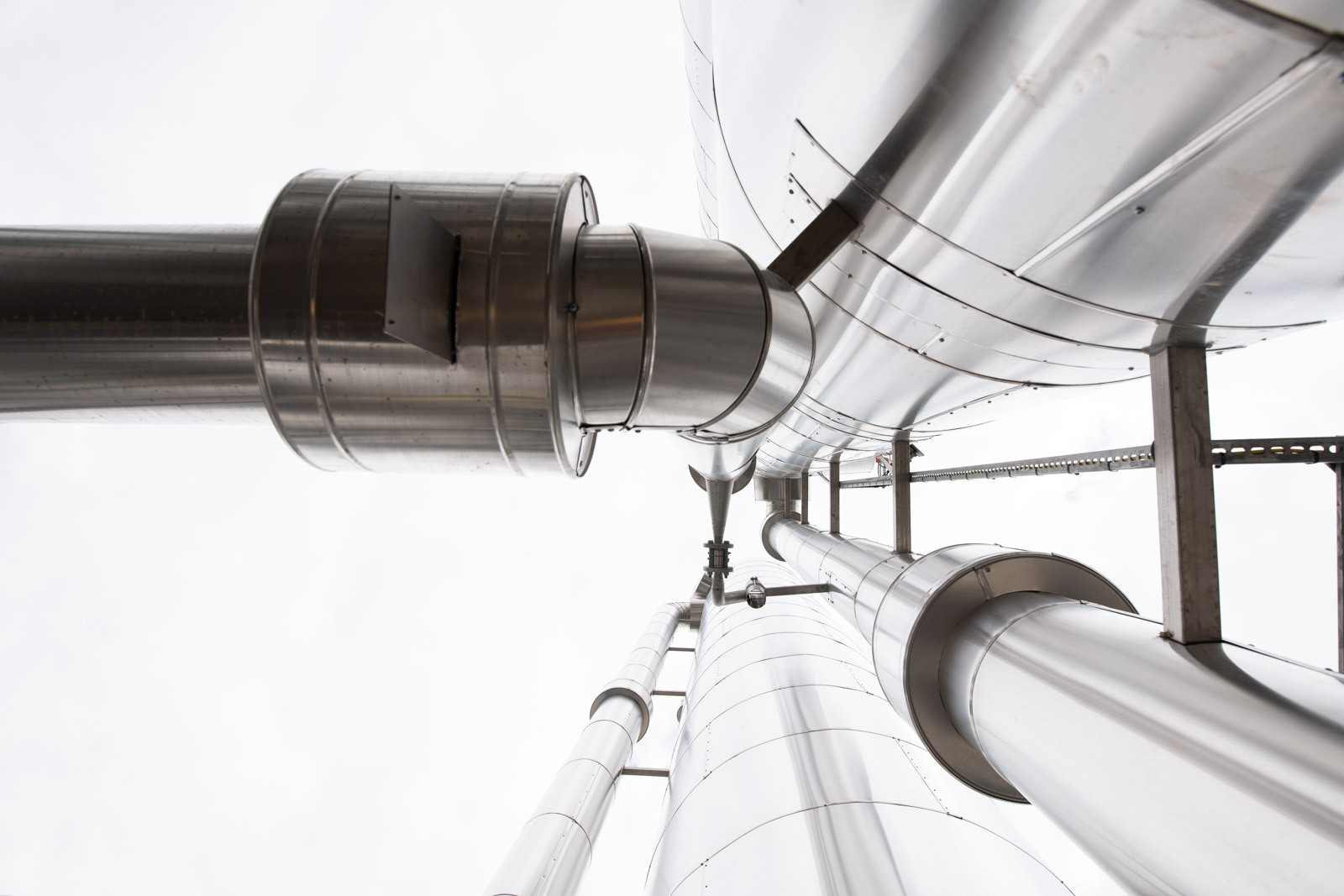

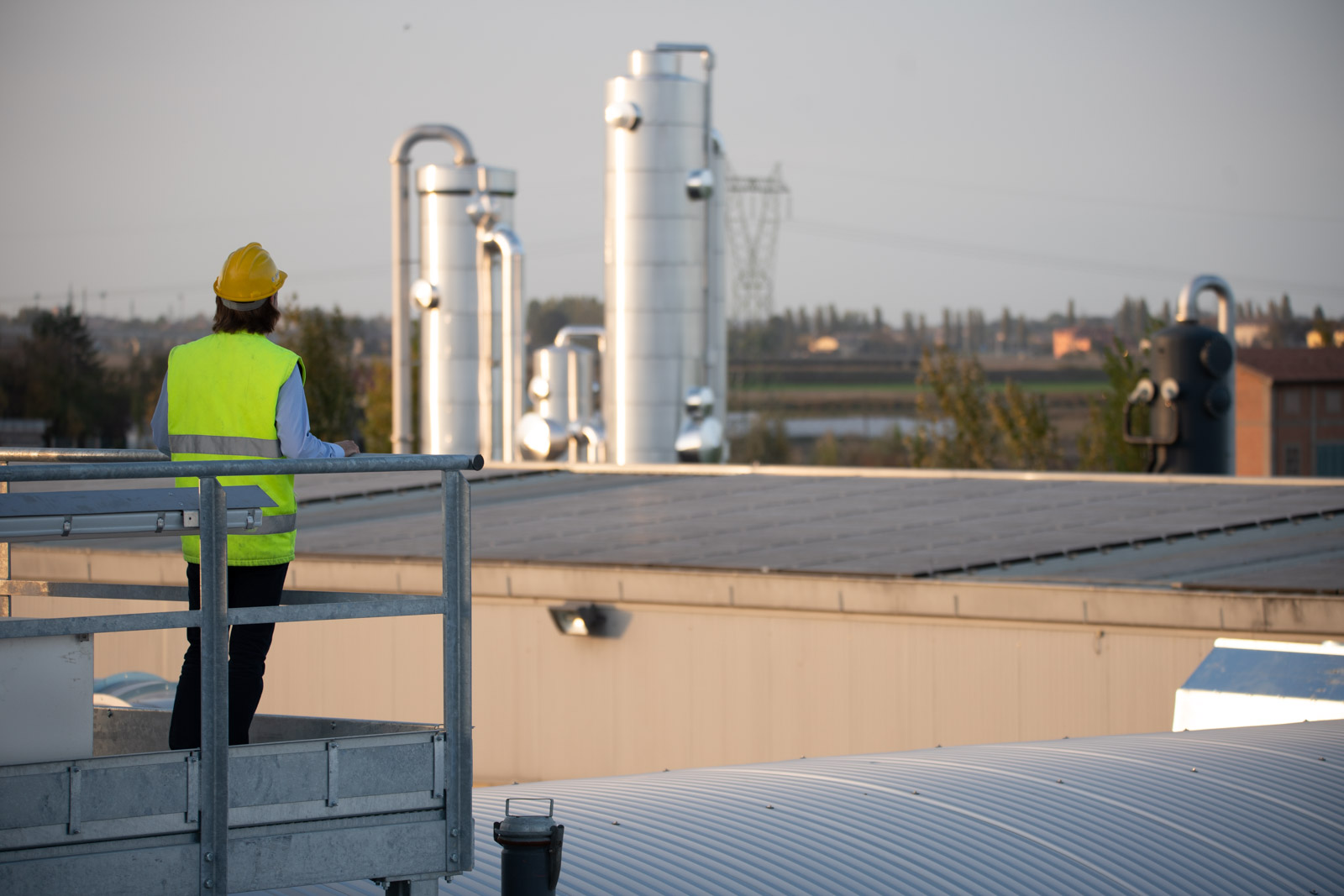
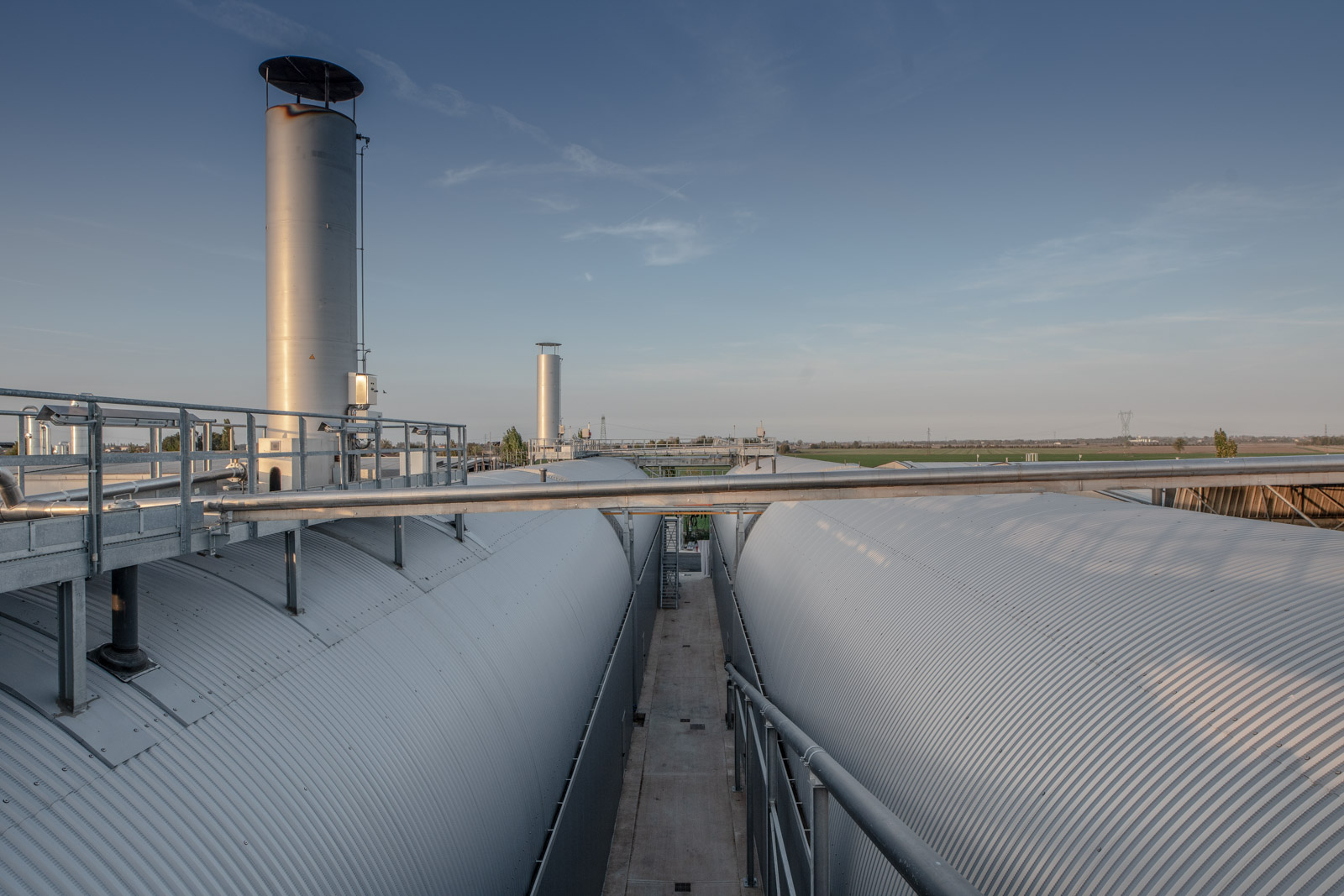
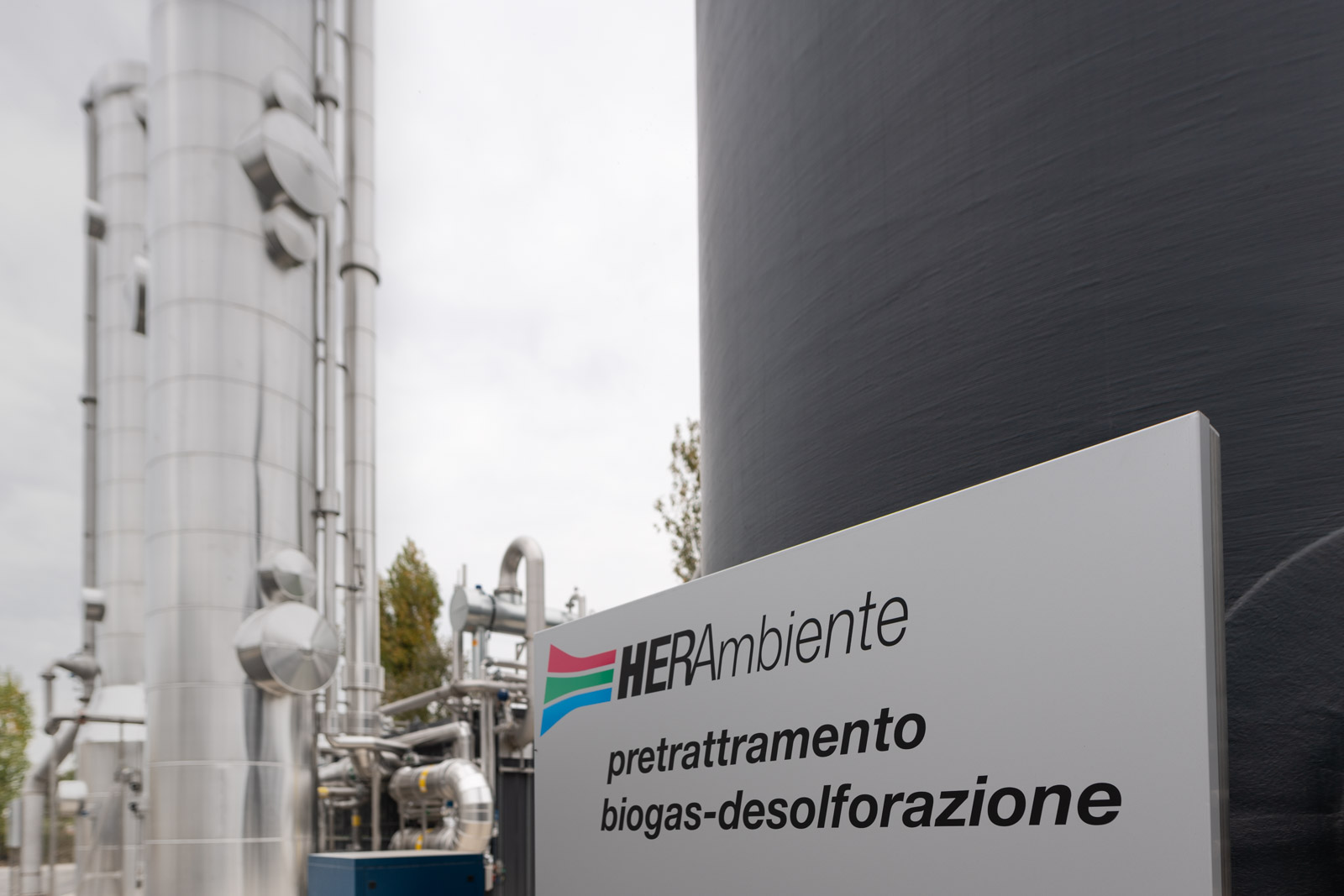
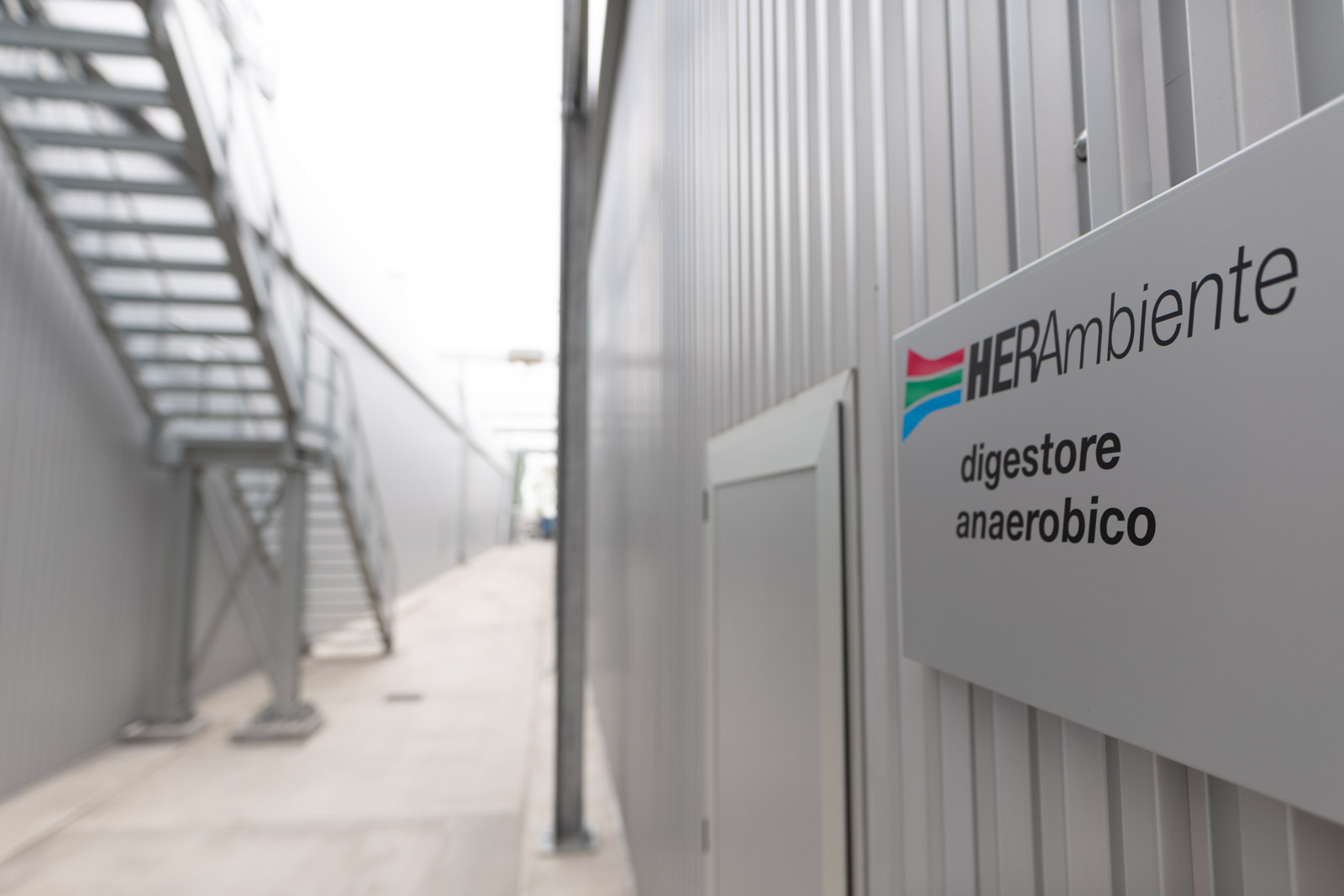

Search Bar
Tag Facet
Search Results
Asset Publisher


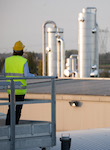

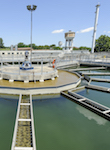


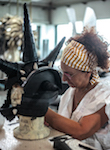

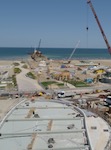

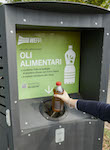
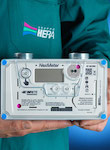



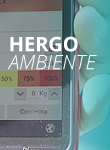
.jpg/468d051b-ba80-83a6-359d-7ef55eefd940)
.jpeg/1d0e0770-1094-b22b-fce4-099f27c72978)
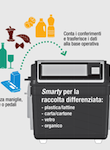


.png/02684bcc-be33-3bb3-daf4-5f1a2d9dac74)
.jpg/9565bb79-c635-94a1-62b9-d0a45db370e3)
